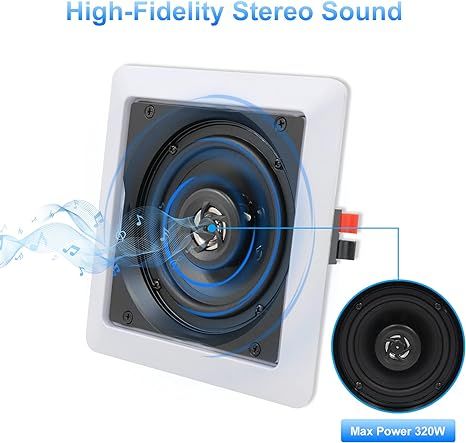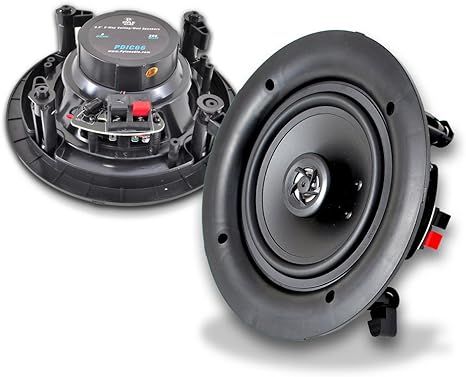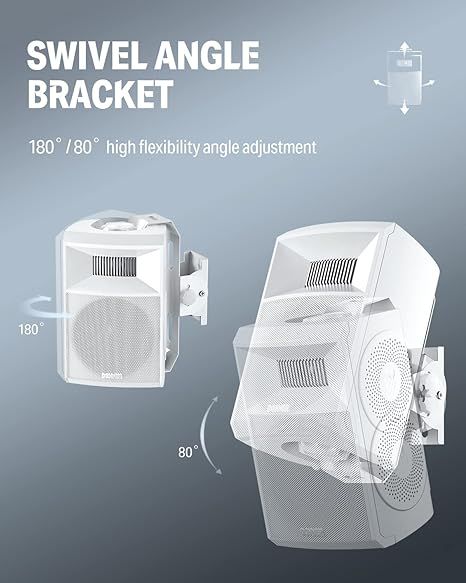Sealed vs. Ported Subwoofers: Pros and Cons
- Understanding Subwoofer Enclosures
- Sealed Subwoofers
- Ported Subwoofers
- Sealed vs. Ported: Technical Comparison
- Advantages of Sealed Subwoofers
- Advantages of Ported Subwoofers
- Disadvantages Comparison
- Choosing the Right Type
- Power and Amplifier Considerations
- Top 10 Sealed and Ported Subwoofers Compared
- Detailed Model Reviews
- 1. SVS SB-1000 Pro (Sealed)
- 2. SVS PB-1000 Pro (Ported)
- 3. Klipsch R-120SW (Ported)
- 4. Polk HTS 12 (Ported)
- 5. REL Acoustics T/7x (Sealed)
- 6. Yamaha NS-SW300 (Ported)
- 7. Monoprice Monolith 12 (Sealed)
- 8. JBL Stage A100P (Ported)
- 9. BIC America F12 (Ported)
- 10. ELAC SUB3030 (Sealed)
- Frequency Response Comparison
- Sealed vs. Ported in Real-World Scenarios
- Sound Character and Listening Preferences
- Placement and Room Acoustics
- Maintenance and Longevity
- Quick Buying Guide
- Cost Overview
- User Experience Highlights
- Final Thoughts
Subwoofers are the heartbeat of any audio system. They deliver the low-frequency energy that brings movies to life, makes music immersive, and shakes the floor during intense gaming sessions. But not all subwoofers are built the same. One of the most important design differences is whether a subwoofer is sealed or ported.
This seemingly small design decision dramatically affects performance, sound signature, and suitability for different rooms and listening preferences.
In this guide, we'll break down how sealed and ported subwoofers work, their pros and cons, how to choose between them, and which models perform best. At the end, you'll also find a comparison of 10 top subwoofers with prices, key specs, pros/cons, and user impressions.
Understanding Subwoofer Enclosures
A subwoofer's enclosure design directly impacts its response curve, efficiency, and tonal balance.
Sealed Subwoofers
A sealed enclosure, also called an acoustic suspension design, is completely airtight. The trapped air inside acts as a spring, controlling the cone movement and producing tight, accurate bass.
Key Characteristics:
-
Tight, controlled low end
-
Smooth frequency roll-off
-
Requires more amplifier power for the same output
-
Typically smaller enclosure size
Ported Subwoofers
A ported enclosure (also called bass reflex) includes an air vent or port that reinforces low frequencies by allowing air to move in and out of the cabinet.
Key Characteristics:
-
Louder output and higher efficiency
-
Deeper bass extension
-
Larger cabinet
-
Slightly less precise response
Sealed vs. Ported: Technical Comparison
| Feature | Sealed Subwoofer | Ported Subwoofer |
|---|---|---|
| Enclosure Type | Airtight (acoustic suspension) | Vented (bass reflex) |
| Sound Character | Tight, accurate bass | Loud, deep, boomy bass |
| Efficiency | Lower - needs more power | Higher - uses air port for gain |
| Size | Compact | Larger |
| Frequency Extension | Rolls off smoothly | Extends deeper (boosted low end) |
| Best For | Music, critical listening | Home theater, gaming |
| Power Handling | Greater amplifier demand | More output per watt |
| Room Placement | Easier to position | Sensitive to wall distance |
| Transient Response | Fast, punchy | Slightly slower, more resonance |
| Durability | No port noise | Can produce port chuffing at high volume |
Advantages of Sealed Subwoofers
-
Tight, Precise Bass: Ideal for acoustic, jazz, or classical music where definition matters.
-
Compact Size: Fits small rooms and apartment setups.
-
Better Integration: Blends smoothly with main speakers for balanced sound.
-
Cleaner Transients: Quick start/stop response keeps bass lines crisp.
Advantages of Ported Subwoofers
-
Higher Output: Produces louder, more cinematic bass.
-
Deeper Extension: Reaches sub-20 Hz frequencies for true theater rumble.
-
Energy-Efficient: Requires less amplifier power for the same SPL.
-
Ideal for Large Rooms: Moves more air and fills bigger spaces.
Disadvantages Comparison
| Type | Main Drawbacks |
|---|---|
| Sealed | Lower output, needs more power, limited deep-bass extension |
| Ported | Larger box, potential port noise, less accurate transient response |
Choosing the Right Type
When deciding between sealed and ported, consider three key factors: room size, listening habits, and content type.
| Room Size | Best Type | Reason |
|---|---|---|
| Small (under 200 sq ft) | Sealed | Tight, controlled bass, no over-boom |
| Medium (200-400 sq ft) | Either | Depends on preference |
| Large (400+ sq ft) | Ported | Higher output fills space easily |
If you mainly watch movies and gaming, go ported for room-shaking depth.
If you listen to music or studio-quality recordings, choose sealed for precision.
Power and Amplifier Considerations
Because sealed subwoofers are less efficient, they often require amplifiers 20-30 % more powerful than ported models to reach similar volume levels. However, their smaller drivers and tighter cones handle distortion more gracefully.
Top 10 Sealed and Ported Subwoofers Compared
| Model | Type | Price (Amazon) | Driver Size | Amplifier Power | Pros | Cons | Avg. Rating |
|---|---|---|---|---|---|---|---|
| SVS SB-1000 Pro | Sealed | $599 | 12 in | 325 W RMS | Tight, accurate, compact | Limited ultra-low bass | 4.8/5 |
| SVS PB-1000 Pro | Ported | $799 | 12 in | 325 W RMS | Deep extension, loud output | Larger cabinet | 4.8/5 |
| Klipsch R-120SW | Ported | $249 | 12 in | 200 W RMS | Affordable, cinematic sound | Less precise for music | 4.6/5 |
| Polk Audio HTS 12 | Ported | $449 | 12 in | 400 W peak | Strong bass, stylish design | Slight port noise | 4.6/5 |
| REL Acoustics T/7x | Sealed | $999 | 8 in | 200 W RMS | Elegant, audiophile quality | Pricey | 4.8/5 |
| Yamaha NS-SW300 | Ported | $499 | 10 in | 250 W RMS | Clean, natural tone | Mid-bass emphasis | 4.5/5 |
| Monoprice Monolith 12 | Sealed | $899 | 12 in | 500 W RMS | Reference-grade clarity | Heavy | 4.7/5 |
| JBL Stage A100P | Ported | $329 | 10 in | 150 W RMS | Good value, powerful | Limited control | 4.5/5 |
| BIC America F12 | Ported | $239 | 12 in | 475 W peak | Loud, affordable | Less subtlety | 4.6/5 |
| ELAC SUB3030 | Sealed | $899 | 12 in | 500 W RMS | App control, high accuracy | Requires setup tuning | 4.7/5 |
Detailed Model Reviews
1. SVS SB-1000 Pro (Sealed)
Compact yet powerful, this model is designed for small to medium rooms.
Pros: Tight bass, smartphone app control, elegant finish.
Cons: Doesn't hit infrasonic depths.
Customer Review: "Perfect for music lovers-fast, clean, no boominess."
2. SVS PB-1000 Pro (Ported)
A cinematic beast that delivers visceral movie bass.
Pros: Deep extension to 17 Hz, huge output for size.
Cons: Large enclosure, less subtle mid-bass.
Customer Review: "Explosions sound real. My couch literally shakes."
3. Klipsch R-120SW (Ported)
Budget-friendly performance for home theaters.
Pros: Impactful low end, stylish copper driver.
Cons: Midrange less defined for music.
Customer Review: "Outstanding value-turned my living room into a theater."
4. Polk HTS 12 (Ported)
A well-rounded performer for mixed use.
Pros: Sleek design, Power Port technology minimizes noise.
Cons: Slightly large footprint.
Customer Review: "Clean punchy bass for movies and EDM."
5. REL Acoustics T/7x (Sealed)
Premium audiophile subwoofer built for musical integration.
Pros: Beautifully tuned, exceptional transient response.
Cons: Pricey for its size.
Customer Review: "Adds warmth without overpowering the mix-pure elegance."
6. Yamaha NS-SW300 (Ported)
Balanced choice for small-to-medium rooms.
Pros: Advanced YST II tech keeps distortion low.
Cons: Slight mid-bass bias.
Customer Review: "Refined sound for both movies and live concerts."
7. Monoprice Monolith 12 (Sealed)
Professional-grade sub delivering studio-accurate bass.
Pros: Incredible power, low distortion.
Cons: Heavy and requires solid flooring.
Customer Review: "Hits hard and stays clean even at high volume."
8. JBL Stage A100P (Ported)
Simple, effective sub for general home theater use.
Pros: Affordable, compact, punchy.
Cons: Not suitable for very large rooms.
Customer Review: "Great starter sub-tight, no rattles."
9. BIC America F12 (Ported)
One of the most popular budget subs.
Pros: Loud, dependable, long warranty.
Cons: Can sound boomy if poorly placed.
Customer Review: "A monster for the money-neighbors aren't thrilled."
10. ELAC SUB3030 (Sealed)
Modern sealed subwoofer with Bluetooth control and DSP.
Pros: Custom tuning, powerful yet accurate.
Cons: Needs app calibration.
Customer Review: "Studio-grade sound with modern controls. Worth every dollar."
Frequency Response Comparison
| Model | Type | Frequency Range |
|---|---|---|
| SVS SB-1000 Pro | Sealed | 20-270 Hz |
| SVS PB-1000 Pro | Ported | 17-270 Hz |
| REL T/7x | Sealed | 30-120 Hz |
| Monolith 12 | Sealed | 16-200 Hz |
| Polk HTS 12 | Ported | 22-180 Hz |
| BIC F12 | Ported | 25-200 Hz |
| ELAC SUB3030 | Sealed | 25-150 Hz |
Sealed vs. Ported in Real-World Scenarios
| Usage Scenario | Recommended Type | Explanation |
|---|---|---|
| Apartment or condo | Sealed | Controlled bass prevents neighbor complaints |
| Dedicated home theater | Ported | Cinematic deep bass and impact |
| Music studio or audiophile setup | Sealed | Accuracy and clarity over volume |
| Large living room | Ported | Fills large spaces with ease |
| Multi-purpose entertainment room | Dual sub setup | One of each for balance |
Sound Character and Listening Preferences
-
Sealed: "Clean" and "tight." You feel the bass as musical texture.
-
Ported: "Powerful" and "theatrical." You hear the bass as physical pressure.
Neither is better universally-the goal is to match the enclosure to your personal taste and room conditions.
Placement and Room Acoustics
Proper placement affects performance more than people realize:
-
Keep at least 6 inches between a ported sub's vent and any wall.
-
For sealed subs, corner placement can extend low-end response by ~3 dB.
-
Always calibrate using your receiver's room-EQ system for balanced output.
Maintenance and Longevity
Both enclosure types can last a decade or more with minimal care.
-
Sealed: Less prone to dust ingress; no ports to clean.
-
Ported: Inspect ports for dust buildup; ensure free airflow.
Quick Buying Guide
| Preference | Recommendation |
|---|---|
| Tight, musical bass | Sealed subwoofer |
| Maximum volume and theater impact | Ported subwoofer |
| Small space | Compact sealed model |
| Large room | Ported 12 in or 15 in driver |
| Balanced performance | Dual setup or hybrid tuning |
Cost Overview
| Type | Average Price Range |
|---|---|
| Sealed | $400-$1,200 |
| Ported | $250-$1,000 |
| Premium Audiophile | $1,000-$2,000+ |
User Experience Highlights
Across hundreds of user reviews, trends show:
-
Music lovers favor sealed subs for "cleaner mid-bass."
-
Movie enthusiasts overwhelmingly prefer ported designs for "room-shaking energy."
-
Mixed-use setups benefit from dual subwoofers or DSP tuning.
Final Thoughts
Both sealed and ported subwoofers have their rightful place in home audio. Sealed subs deliver refinement, speed, and musical detail. Ported subs provide excitement, power, and cinematic presence.
When paired correctly with your speakers and room, either design can provide jaw-dropping bass performance. The key is understanding your space, preferences, and usage patterns.
If you prioritize accuracy, go sealed.
If you crave impact and volume, go ported.
Either way, modern subwoofer technology ensures you'll enjoy thrilling, deep, and dynamic sound for years to come.







